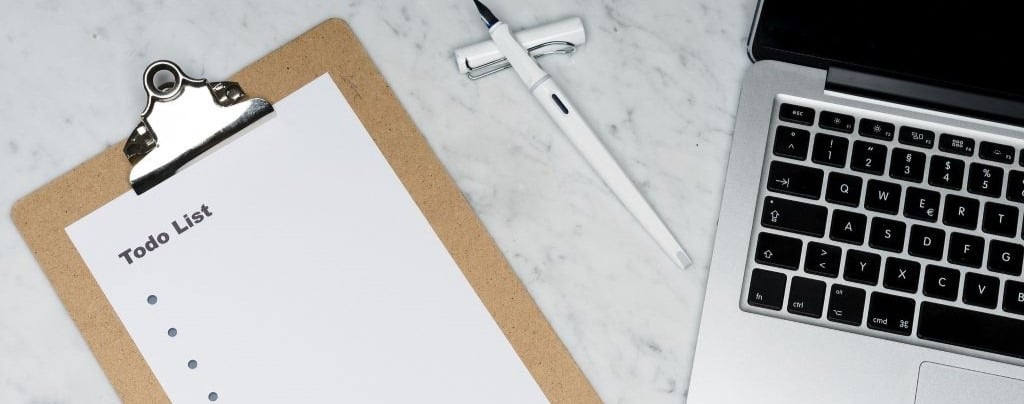
Work is a major source of stress for many people. According to the American Psychological Association, those who typically feel stressed at work are three times more likely to seek other employment in the next year. Further, three in five employees have experienced negative impacts on work performance due to stress. This can include a lack of motivation, difficulty focusing, and decreased productivity. Employee stress can lead to burnout if left unchecked.
Supporting employee mental health is important for each individual and also for your business. Thankfully, there are many ways you can help empower and prevent employee burnout.
Prefer watching videos? Check out Julien’s live presentation about burnout:
What is Burnout?
It can be hard to tell the line between stress and burnout. Burnout is known as the accumulation of unchecked and unresolved stress that builds up over a long period of time. It is a state of emotional, physical, and mental exhaustion. Burnout can make people feel emotionally drained and unable to function at work or in their personal life.
What are the Signs of Burnout?

It is very hard to spot early signs of burnout, whether in yourself, employees, family members, or friends because it’s not something that happens overnight. It develops over weeks or months, as a response to working with stress.
Another reason why it is hard to spot is that the symptoms look different from one person to the next. You could have two people in the same company with the exact same role going through the same stress and one day become burnt out and the other one may not. Alternatively, they both become burnt out but show very different signs or symptoms.
There are two types of signs. The first one is physical signs. These are visible signs that may be the easiest to recognize, especially in yourself, but also in others. Some examples include:
- anxiety
- fatigue
- headaches
- difficulty sleeping
The other types of signs are harder to diagnose. These are psychological signs, which include:
- an increasingly cynical outlook on life and work
- bad mood and low morale
- difficulty concentrating
- feeling a lack of creativity
- quickness to anger
How to Prevent Employee Burnout?

Here are some tips on how to prevent employee burnout:
- Set realistic goals.
One of the easiest ways to help your employees prevent burnout is to make sure that your employees’ goals and schedules are manageable. A chaotic schedule where they are jumping from one thing to the next can lead to always feeling behind can lead to struggles with their mental well-being. So make sure you have realistic goals for them that are aligned with what is expected of them at work. Setting their goals so high that they just can’t get to them will end up stressing them out. Being realistic with goal setting is really good for employee happiness. - Prioritize time and tasks.
Providing a project management and task-organizing platform like Asana can help organize your employees’ deadlines and ensure you are on the same page. A task may take longer than you or they expected, which can put your employee behind, so it’s important to consider this when delegating tasks and deadlines. Be aware of time management, and prioritizing properly. That’s a huge step towards preventing burnout. - Give more attention to quality duties.
Making sure that they pay attention to the right clients, coworkers, and overall tasks are crucial so they are not wasting their energy and stressing about the noise that may not fit into the bigger picture. - Reach out for support.
If you see an employee who may be struggling or falling behind, they may feel uncomfortable coming forward and seeking support. Ensure you have an open door and accommodate individual needs as they arise, while also encouraging your team to seek help if they need it. If an employee makes a mistake, it’s important to first acknowledge that everyone makes mistakes, and support the employee to learn from their mistake. - Encourage employees to work on themselves.
This one will be covered in more detail below. - Encourage frequent breaks.
This one is very important. Employees may feel like they have things to do and cannot make time for breaks. Taking breaks every couple of hours is a great way to recharge and slow down the brain. Staring at a computer for hours puts a big strain on the eyes and mental health. So encouraging taking breaks often is a really great way to combat that. Suggest going outside for a walk, stretching, and having a healthy snack. - Exercise regularly.
If your team works in an office, do some office movement! Exercising is really good for well-being, lowering stress, and decreasing emotional exhaustion and other burnout symptoms. - Offer flexibility.
Offering flexible hours can reduce workplace stress, especially for those with children. - Encourage paid time off.
Employers may think this will hurt their business. However, if employees are able to destress away from work, they will come back refreshed.
How to Deal with Burnout?
If you have a team member who is already burnout, there are different types of rest that you can suggest to your team to deal with burnout. This is a well-known movement by Dr. Saundra Dalton-Smith.
1. Physical rest

The first one is the most logical one. There are two different types of physical rest: passive and active. Passive rest is sleeping or taking power naps. Active physical rest may include:
- stretching
- getting a massage
- or using an ergonomic chair and desk
Those are kinds of active rest that will help the body recover and feel more rested. People have the misconception that they go to the gym to build muscle. But, when at the gym, one breaks down muscle and it is only when you rest that the body repairs itself and builds muscle. So, it is really important that when your team works hard, they take a break to recharge their brain and let their body recover.
2. Mental rest

If your team is distracted or overwhelmed, they are most likely to need some mental rest. They might have brain fog. If your team seems less productive than usual, instead of pushing them to work harder, think about how they could be mentally drained or experiencing a mental rest deficit. This is caused by overtaxing one’s thinking. Some of the ways to combat this are:
- Write down to-dos. 1UP uses Asana for downloading everything from our brains into a to-do list system. Tip for your employees: if they are working and think of something they have to do in their personal life, like paying a bill, write it down. This way they will not clog their brain with more information.
- Create a shutdown ritual to separate work and life. This is especially important for remote workers. For example, changing from work clothes to non-work clothes after work or going for a walk after work to clear the mind. In France, it is actually illegal to send employees emails after work!
- Take a break from problem-solving. This is a big one. For example, if your employee is trying to diagnose an issue for a client or with software that has been having a lot of issues, suggest moving to a more menial task like data entry or something that does not require much brain power.
- Meditation. It has shown a lot of benefits for the brain, and system refocusing. Allow your employees to take 5-10 minute meditation sessions throughout the day.
- Take short breaks during the day. This one applies to physical rest but also to mental rest. Taking a break that allows one to stop their brain from thinking and just slow things down allows for a mental reset.
3. Social Rest

Obtaining social rest starts with evaluating relationships. Dr. Dalton-Smith advises people to spend more time with those who give energy and spend less time with people who steal energy. Some examples of social rest that you can suggest to your team are:
- Spending time with people who give them energy
- If introverted, blocking out time to be alone
4. Spiritual Rest

This one is not just for spirituality in terms of religion but in terms of feeling connected with the world. When your team feels disconnected from the rest of the world, it can leave them feeling unmoored. Spiritual rest can provide them with a sense of purpose and belonging.
Spiritual rest can look like being a part of something bigger than oneself. For example:
- Volunteering for a good cause
- Participating in faith-based activities (if it aligns with their belief system)
- Working with a coach or a mentor to reconnect short-term goals to the bigger picture. It is easy to get bogged down with short-term goals of the day or week and then lose oneself in terms of life accomplishments
- Meditate
5. Sensory Rest

The world is overloaded by noise and notifications, which is very hard on human senses due to overstimulation. Many people are not immune to picking up their phones for no reason. Even though no notification appeared, the brain craves more and more stimulation. This is also something that can lead to burnout because it is linked to some aspects of mental rest. Our brain has trouble taking breaks and is always on alert. So if your employees need to retreat from all the sensory overload and reconnect with themselves and their senses, suggest:
- Taking a break from social media. Social media is a huge time and attention waster. It is allegedly not good for mental health because people innately compare their lives to others. Suggest taking a little break from social media if your team is finding they are stressed or short on time. This provides more time to focus on oneself. This can look like removing the application from their phone, pausing their account, or just pausing the notifications.
- Turning off notifications (sounds and visual alerts). This is especially important to suggest for focus work. Suggest turning off chat notifications, email notifications, social media notifications, etc.
- Limit video meetings. Everybody is Zoom’d out over the last two years. Being in video meetings all day can be a drain on mental health.
- Turn off chat and email while working.
- Set a relaxing evening ambience. Playing some relaxing music, lighting candles, and having a hot bath can calm the nervous system.
- Get some fresh air. Go for a walk outside, even for 10 minutes. Taking breaks from the computer screen can be really helpful for slowing down and just giving the sensory system a rest.
6. Emotional Rest

Emotional rest deficit occurs when your employee feels like they cannot be authentic. For example, an airline attendant who is always smiling despite rude passengers. Some tips for emotional rest:
- Spend time with people they can be authentic around
- Vent to a friend
- Speaking to a therapist
- Keep a journal to reduce emotional labour
A lot of the stress and burnout is from keeping stress bottlenecked. Encourage your employees to offload their brains into a spreadsheet or to a to-do list to Asana.
7. Creative Rest

Everyone goes through the feeling of being out of good ideas at some point. This is called being creatively drained. It’s also known as a creative block or writer’s block. It is more relevant to certain types of jobs, like graphic design artists and writers, but it also affects problem solvers. Some ideas for creative rest include:
- Appreciating beauty in any form, whether human-made or natural
- Natural examples include:
- Watch sunset or sunrise
- Go for a walk in nature
- Some human-created examples include:
- Visit a museum or art festival
- Engage with inspiring music, books, documentaries, or something else that is inspiring
What You Can Do

It will likely be overwhelming for your employees to try all these types of rests at the same time. Ask them to think about where their biggest deficit is. Is it physical? Mental? Creative? Spiritual? Start with that one. Taking small steps allows them to adjust easier to change and create good habits moving forward.
Get your team to try this rest quiz! It takes about five minutes.
The results will be emailed to them with the grading per categories of rest and stress. It tells them where which type of rest they should focus on.
Introduce team challenges where you keep each other accountable. Get each individual to choose a rest that they feel they need to work on. Creating habits does not happen overnight. It takes about 30 days to three months to really create a habit otherwise it is just a little fad. It is important to remember to be patient!
We have Positive Impact Projects at 1UP Digital Marketing that are focused on breaking bad habits or physical movement challenges that are helpful for accountability. We are taking some of the right steps as a group but this is somewhat of a personal employee journey as well. It is a two-way street between the employee and the employer to prevent and deal with burnout.
Stressed about your digital marketing? Let us know below how we can help relieve your ‘side-of-desk’ stress, and ‘1UP’ your digital marketing performance!
